How to Estimate Plumbing Cost For New Construction: Here’s the Breakdown!

Table of Contents
Building a new home is exciting, until the bills start stacking up. One cost that often surprises homeowners, builders, and even seasoned contractors is plumbing. From hidden pipes to fixtures that seem to double in price overnight, estimating plumbing costs can feel like chasing a moving target. But here’s the thing: plumbing is not where you want surprises. It’s the system that keeps everything flowing. Understanding what affects plumbing rates and how new build plumbing expenses break down can help you stay ahead, so your project runs smoothly, and your budget doesn’t spring a leak.
What’s Included in New Construction Plumbing?
New construction plumbing is more than just pipes behind walls, it’s an entire system coming to life. It starts with the plumbing rough-in, where the framework gets built; water line installation, drainage system, and vents are all laid out according to your house plumbing plan. Think of it as the skeleton. Then comes the finish stage; installing the plumbing fixtures like sinks, faucets, tubs, and toilets. Rough-in is what you don’t see but can’t live without and finish work is what makes the system usable. Together, they turn your plans into a working home that flows, drains, and holds up for years.
Key Factors That Affect Plumbing Costs in 2025
House Size: Why Square Footage Matters
When planning your plumbing cost, square footage is one of the biggest factors. Larger homes mean more piping, longer connections, and more time on-site. Expect your cost per square foot plumbing to rise with added space. Here’s a breakdown of average plumbing costs based on common home sizes:
| House Size | Average Plumbing Cost |
| 200 sq. ft. tiny home | $1,500 – $3,000 |
| 500 sq. ft. studio | $2,500 – $4,500 |
| 1000 sq. ft. home | $4,800 – $6,500 |
| 1500 sq. ft. home | $6,000 – $9,000 |
| 2000 sq. ft. home | $8,500 – $12,000 |

Number of Bathrooms and Kitchens
Every bathroom or kitchen you add means more plumbing work. From rough-ins to hookups, each sink, shower, or dishwasher adds labor, materials, and time. Even a half bath can raise costs more than you can expect.
On top of that, basic fixtures are more affordable, while high-end options with advanced features can significantly increase your budget. For example, a basic toilet might cost around $100, while a high-end model with advanced flushing technology could cost as much as $500. Similarly, a simple kitchen sink could cost around $150, while a premium model with additional features might cost over $1,000.
PEX vs. Copper: Making the Choice
PEX is flexible, affordable, and ideal for fast installs which is perfect for indoor systems. Meanwhile, copper costs more but lasts longer and resists bacteria, making it great for outdoor lines. The type of plumbing pipe material you choose affects not just cost but performance and longevity. Here’s a breakdown of their average cost:
| Type of Material | Quality | Price (Per liners foot) |
| PEX Tubing | Premium | $0.50 – $1.50 |
| PVC Pipes | Premium | $0.40 – $2 |
| Copper Pipes | High End | $3 – $8 |
| Fittings | Standard | $0.30 – $5 |
Labor Costs and Permits
Labor rates vary widely. So when you ask, “How much does a plumber cost?”, the answer depends on your region. Expect the plumber hourly rate to climb in high-demand areas. Also, don’t forget about permit fees, which local building departments require for plumbing work in new construction, and they can add up fast.
Complexity of Design and Layout
Ever wonder why two homes the same size can have very different plumbing costs? It often comes down to layout. Homes with tricky corners, extra floors, or custom features take more time and skill to plumb. A well-planned plumbing layout helps keep the job smoother and the overall cost more manageable.

Labor Costs: What Plumbers Charge
As you might have already guessed, labor is a big part of your overall plumbing cost, and rates can vary more than you might think. On average, the plumber hourly rate ranges from $50 to $150, depending on your location. Some plumbers offer flat rates for specific jobs, while others charge by the hour.
When you are comparing plumbing estimates, be sure to ask what is included. Are permit fees extra? What about travel time? In many cases, pricing also shifts based on location, since urban jobs often cost more than rural ones. And while that bargain quote might look good now, hiring someone experienced means fewer surprises later.
Get a Professional Estimate
Material costs are easy to price out, but labor? That’s where things vary. Every plumber charges differently, which is why it pays to shop around. At Will Plumbing, we offer a free estimate on plumbing so you know exactly what to expect before the work begins. Our detailed plumbing estimates help you compare options, avoid hidden fees, and stay within budget from day one.
Frequently Asked Questions – FAQs
What is estimation in plumbing?
Plumbing estimating is the process of calculating the projected costs and materials needed to complete a plumbing project.
How much does plumbing cost for a new house?
On average, the cost of plumbing a new house is $7,500. The lowest estimate can come up to $1,500, but more detailed work can even exceed $15,000.
How much do pipes cost?
The cost to repipe a house is between $1,500 and $15,000, and the average homeowner spends $7,500. You can expect to spend $0.40 to $8 per linear foot on the piping, depending on the type of pipe.
How do I know my plumbing pipe size?
In the best-case scenario, the pipe size is written on the side of the pipe. You’ll often find this with different types of plastic piping like PVC, PEX, or CPVC.
What are the importance and benefits of cost estimation?
Cost estimation helps you determine your project’s budget, schedule the necessary work, and manage new resources.
